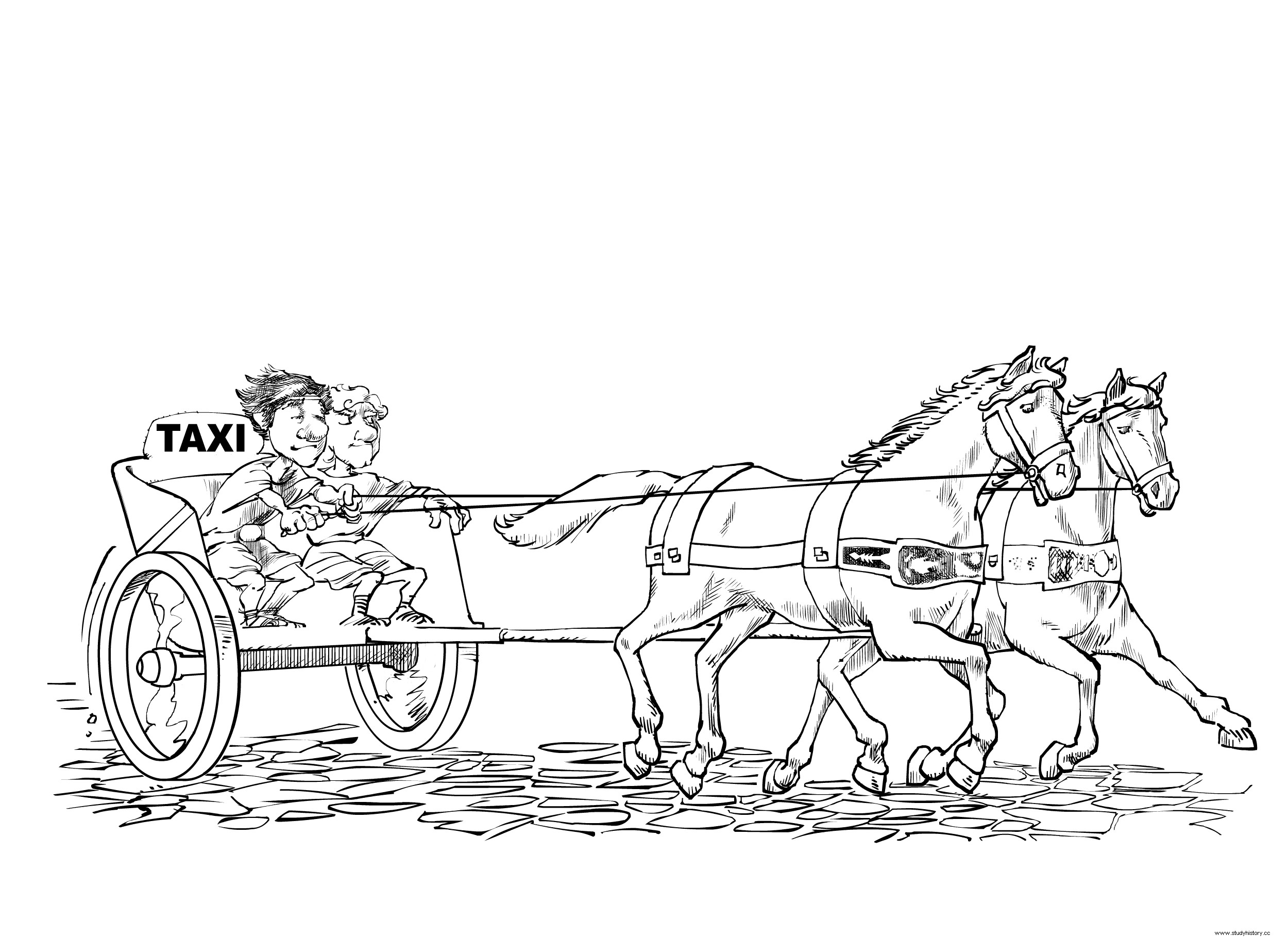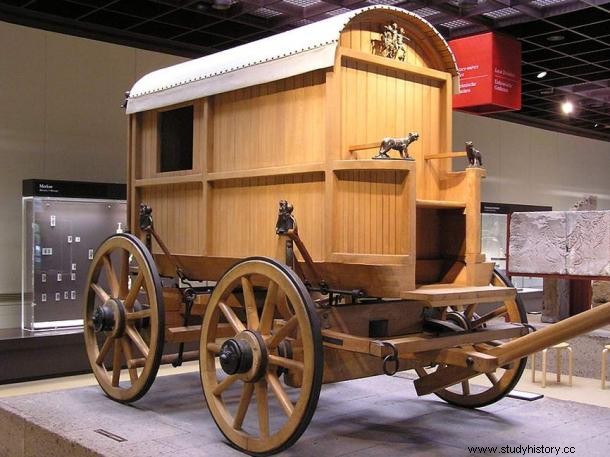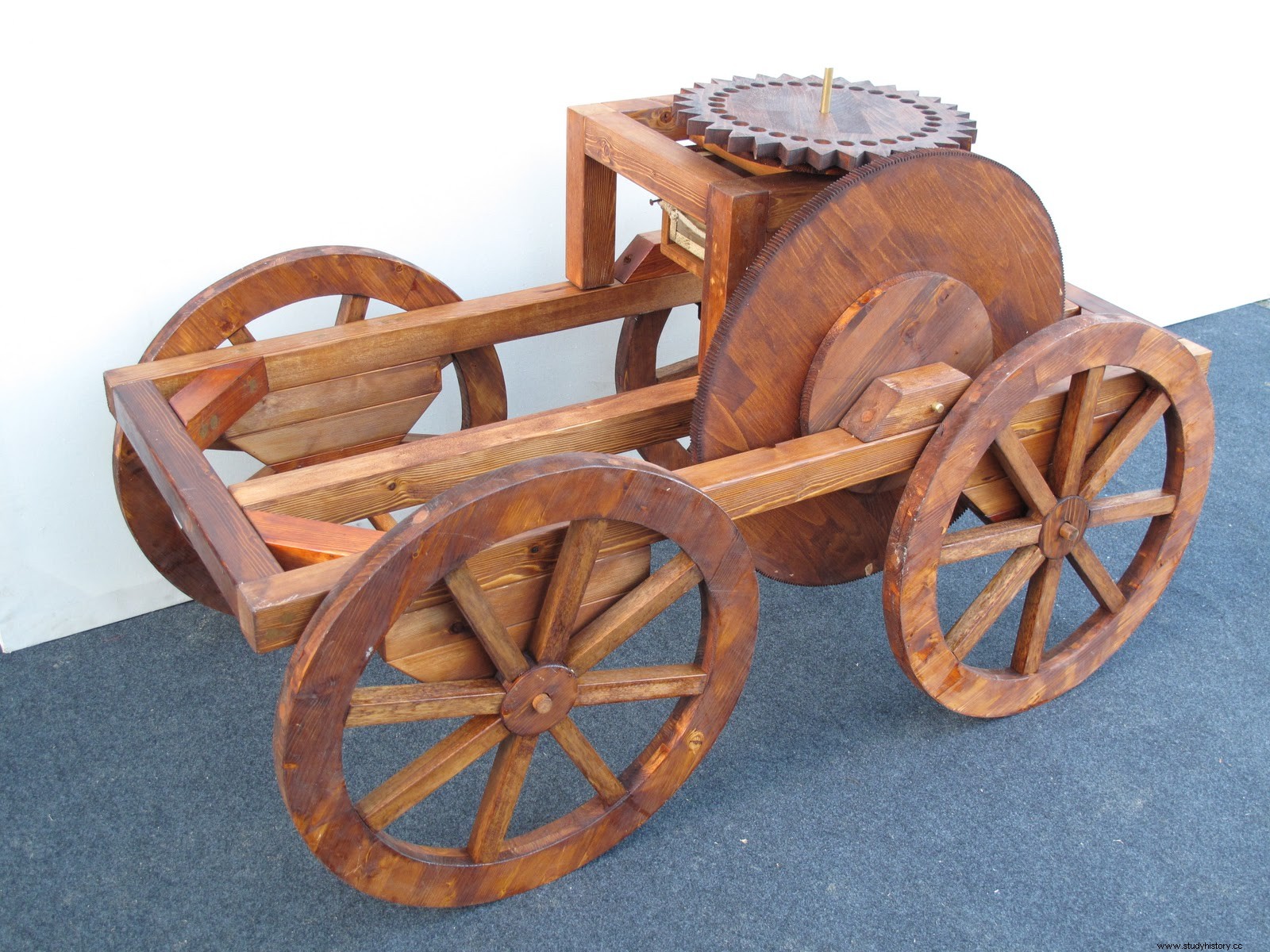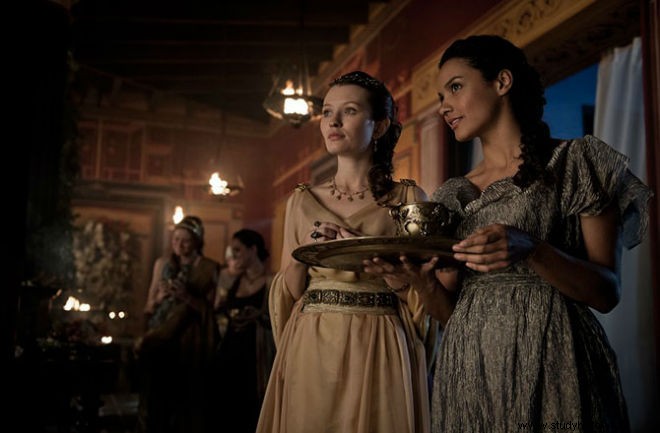The diversity of vehicles that circulated through the streets of Rome could be classified by the load that was transported, the distance to travel... and the means available, that is why the poorest traveled and moved in the San Fernando car (for a while on foot and another walking) or in the vehicle of an acquaintance. So, we will focus on those who could afford a horse or cart.
For short trips or around the city, the wealthiest moved in human-drawn litters (a few slaves) that were completed with another slave opening the way among the plebs; for medium and even short but urgent journeys, the horse, the biga (light chariot pulled by two horses best known for racing in the Circus), the essedum (similar to the biga but for two standing passengers) and the cisium , the taxi of the time .

The cisium it was an open vehicle, possibly of Gallic origin, with two wheels, drawn by two horses and space for two people seated (the cisarius or taxi driver and the client) on a kind of box where the client who rented it kept his luggage. For public transportation or complete families, they had the raeda :a four-wheeled cart with benches to sit on and space for luggage but with load limitation by law.

Carpentum
If the caravan or ruolette of the time was the carpentum , a closed car with a roof to travel comfortably in which you could eat and drink so as not to have to stop at the mansions, the limousine, somewhat smaller than the carpentum, was the carruca . The truck with which the cargo was transported (materials, products of the land...) was the plaustrum :a simple sideless wooden board with two or four wheels and usually pulled by oxen. And to finish with the most popular vehicles in Rome, the arcera for the transport of the sick and wounded. Both the arcera and the carpentum and the carruca had a particularity that distinguished them from the rest of the cars, and that made them more comfortable, a kind of suspension with leather straps.
Roman counter

This word is just a license that I allow myself to name the odometer that the Romans had to measure distances. They called it odometer . A Roman mile converted to our decimal metric system would be, more or less, almost a kilometer and a half.
Although it seems that the invention of the apparatus in question was the work of Archimedes, the most precise description of its operation is made by Vitruvius in De Architectura (Book VII) in the 1st century BC. The odometer was a gear system with a 400-tooth, 4-foot-diameter gear wheel connected to the wheel. One full turn of this wheel meant a mile had been traveled and a pebble (calculus) fell into a box. At the end of the journey it was only necessary to add the calculations to know the miles traveled. Attempts were also made to adapt this system to ships with paddle wheels, but the swaying and swaying of the ships meant that the system was not very accurate. What is clear is that the odometer was a fundamental tool in the work of the taxi driver of the time.
Breathalyzer

From the origins of Rome, women were prohibited from drinking wine and forced to kiss their husband. Both, prohibition and obligation, were directly related and had to do with the ius osculi , the breathalyzer of the time . Through the ius osculi (right to kiss), the husband kissed his wife on the mouth to check if he had drunk wine. Except in the event that the wine consumed was prescribed by a doctor, because the wine was also used for medicinal purposes, the punishment that the wife who had tested positive would receive it was a beating, repudiation and even death. This last case is cited by the historian Valerio Máximo (1st century) when he relates the story of a certain Mecenio who beat his wife to death for drinking wine. It was a notorious case in Roman society at the time, but not because he had killed her, to which he had a right to her, but because of the method used. According to Pliny the Elder, women convicted of this type of "crime", comparable to adultery, should be locked in a room in the house and allowed to die of starvation, just as was done with the wife who stole her husband's clothes. keys to the cellar where he kept the wine. Still, since he only got the form wrong (?), his case was, as we would say today, dismissed. The accused wife could request the “counter-analysis” which, unfortunately for her, was the responsibility of the relatives of the accusing party. The wife had to encourage the husband's relatives who would surely confirm her positive. Going back to the Mecenio story, Valerio Máximo's comment on this story "justified" the reason for punishing this crime:
Any woman who is greedy for wine closes the door to virtue and opens it to all vices.
Over time this prohibition was relaxed and women were able to enjoy the pleasures of Bacchus.
